The Review of Current and Proposed Methods of Manufacturing Fir Tree Slots of Turbine Aero Engine Discs
Abstract
1. Introduction
2. Design of the Aero Engine Turbine Unit
- (a)
- Stress concentration;
- (b)
- The materials used;
- (c)
- The condition of the surface layer after machining, including surface roughness, surface layer stresses, amount of strengthening;
- (d)
- The coating type and its properties.
3. Methods of Manufacturing Fir Tree Slots of the Turbine Discs
3.1. Broaching
3.2. Milling
3.3. Grinding
3.4. Electrochemical Point Grinding
3.5. Electrochemical Machining
3.6. Electrical Discharge Machining
3.7. Wire Electrical Discharge Machining
3.8. Wire Electrochemical Machining
3.9. Wire Electrochemical Trimming
3.10. Abrasive Water Jet
4. Conclusions and Outlook
Author Contributions
Funding
Institutional Review Board Statement
Informed Consent Statement
Data Availability Statement
Conflicts of Interest
References
- Yim, S.H.L.; Lee, G.L.; Lee, I.H.; Allroggen, F.; Ashok, A.; Caiazzo, F.; Eastham, S.D.; Malina, R.; Barrett, S.R.H. Global, regional and local health impacts of civil aviation emissions. Environ. Res. Lett. 2015, 10, 034001. [Google Scholar] [CrossRef]
- Terrenoire, E.; Hauglustaine, D.A.; Cohen, Y.; Cozic, A.; Valorso, R.; Lefèvre, F.; Matthes, S. Impact of present and future aircraft NOx and aerosol emissions on atmospheric composition and associated direct radiative forcing of climate. Atmos. Chem. Phys. 2022, 22, 11987–12023. [Google Scholar] [CrossRef]
- Sustainable Aviation Fuel (SAF). Available online: https://www.neste.com/products/all-products/saf/key-benefits (accessed on 14 March 2023).
- Fuelling Sustainable Aviation. Available online: https://www.rolls-royce.com/media/our-stories.aspx (accessed on 15 March 2023).
- Rolls-Royce to Test 100% Sustainable Aviation Fuel in Next Generation Engine Demonstrator. Available online: https://web.archive.org/web/20230315114808/https://asd-europe.org/rolls-royce-to-test-100-sustainable-aviation-fuel-in-next-generation-engine-demonstrator (accessed on 15 March 2023).
- Clean Aviation—Programme Overview and Structure. Available online: https://www.clean-aviation.eu/programme-overview-and-structure (accessed on 14 March 2023).
- Freeman, S.; Lee, D.S.; Lim, L.L.; Skowron, A.; De León, R.R. Trading off Aircraft Fuel Burn and NOx Emissions for Optimal Climate Policy. Environ. Sci. Technol. 2018, 52, 2498–2505. [Google Scholar] [CrossRef]
- Airbus Reveals New Zero-Emission Concept Aircraft. Available online: https://www.airbus.com/en/newsroom/press-releases/2020-09-airbus-reveals-new-zero-emission-concept-aircraft (accessed on 25 June 2023).
- Europe’s Aviation Sector Launches Ambitious Plan to Reach Net Zero CO2 Emissions by 2050. Available online: https://www.destination2050.eu/press_release_launch/ (accessed on 25 June 2023).
- Destination 2050—A Route to Net Zero European Aviation. Available online: https://www.destination2050.eu/wp-content/uploads/2021/03/Destination2050_Report.pdf (accessed on 15 March 2023).
- Aircraft Engine Market—Analysis and Forecast to 2026. Available online: https://www.marketsandmarkets.com/Market-Reports/aircraft-engine-market-14300744.html (accessed on 14 March 2023).
- Taking Stock of the Pandemic’s Impact on Global Aviation. Available online: https://www.mckinsey.com/industries/travel-logistics-and-infrastructure/our-insights/taking-stock-of-the-pandemics-impact-on-global-aviation (accessed on 16 March 2023).
- Final Boeing 747 Airplane Leaves Everett Factory. Available online: https://investors.boeing.com/investors/news/press-release-details/2022/Final-Boeing-747-Airplane-Leaves-Everett-Factory/default.aspx?_gl=1%2A1842hu0%2A_ga%2AMTA1ODk2MTg3NC4xNjc0NDU2NjYw%2A_ga_3N2PEGZ4HD%2AMTY3NDQ1NjY2Mi4xLjEuMTY3NDQ1NjcxMi4wLjAuMA (accessed on 12 April 2023).
- NASA Issues Award for Greener, More Fuel-Efficient Airliner of Future. Available online: https://www.nasa.gov/press-release/nasa-issues-award-for-greener-more-fuel-efficient-airliner-of-future/ (accessed on 16 March 2023).
- NASA Awarding Boeing $425M over 7 Years for Sustainable Flight Demonstrator Project; Transonic Truss-Braced Wing Concept. Available online: https://www.greencarcongress.com/2023/01/20230119-ttbw.html (accessed on 16 March 2023).
- Power Play: Avio Aero to Lead European Project to Explore Fuel-Cell-Powered Hybrid Electric Systems. Available online: https://blog.geaerospace.com/sustainability/power-play-ges-avio-aero-to-lead-european-project-to-explore-fuel-cell-powered-hybrid-electric-systems/ (accessed on 16 March 2023).
- Global Market Forecast 2022–2041. Available online: https://www.airbus.com/en/products-services/commercial-aircraft/market/global-market-forecast (accessed on 14 March 2023).
- Commercial Market Outlook 2022–2041. Available online: https://www.boeing.com/commercial/market/commercial-market-outlook/index.page (accessed on 14 March 2023).
- Global Aircraft Engine Market to Fly High at a CAGR of 10.89% and Generate $104.65 Billion | Pratt & Whitney, Rolls-Royce, GE Aviation and Safran Holds 80% Share. Available online: https://www.globenewswire.com/en/news-release/2022/12/14/2573537/0/en/Global-Aircraft-Engine-Market-to-Fly-High-at-a-CAGR-of-10-89-and-Generate-104-65-Billion-Pratt-Whitney-Rolls-Royce-GE-Aviation-and-Safran-Holds-80-Share.html (accessed on 14 March 2023).
- Clean Aviation—Large Passenger Aircraft: What Are the Challenges? Available online: https://www.clean-aviation.eu/clean-sky-2/programme-overview-and-structure/clean-sky-2-structure/lpa (accessed on 14 March 2023).
- Unconventional (Advanced) Manufacturing Processes for Gas-Engine Turbine Components. Available online: https://cordis.europa.eu/fa-brands-400.0e53fe4feaaacc48.woff (accessed on 16 March 2023).
- Dvirna, O. Analysis of applied technologies of surface treatment locks grape compressor and turbine. Zesz. Nauk. Politech. Rzesz. 2018, 90, 433–440. [Google Scholar]
- Brujic, D.; Ristic, M.; Mattone, M.; Maggiore, P.; De Poli, G.P. CAD based shape optimization for gas turbine component design. Struct. Multidiscip. Optim. 2010, 41, 647–659. [Google Scholar] [CrossRef]
- Klocke, F.; Klink, A.; Veselovac, D.; Aspinwall, D.K.; Soo, S.L.; Schmidt, M.; Schilp, J.; Levy, G.; Kruth, J.P. Turbomachinery component manufacture by application of electrochemical, electro-physical and photonic processes. CIRP Ann. Manuf. Technol. 2014, 63, 703–726. [Google Scholar] [CrossRef]
- Burek, J.; Babiarz, R.; Buk, J.; Sułkowicz, P.; Krupa, K. The accuracy of finishing WEDM of inconel 718 turbine disc fir tree slots. Materials 2021, 14, 562. [Google Scholar] [CrossRef]
- Kawalec, A.; Magdziak, M. The selection of radius correction method in the case of coordinate measurements applicable for turbine blades. Precis. Eng. 2017, 49, 243–252. [Google Scholar] [CrossRef]
- Godzimirski, J. Nowe technologie lotniczych silników turbinowych. Pr. Inst. Lotnictwa 2011, 213, 22–36. [Google Scholar]
- Klocke, F.; Welling, D.; Klink, A.; Veselovac, D.; Nöthe, T.; Perez, R. Evaluation of advanced Wire-EDM capabilities for the manufacture of fir tree slots in inconel 718. Procedia CIRP 2014, 14, 430–435. [Google Scholar] [CrossRef]
- Magdziak, M. A new method of distribution of measurement points on curvilinear surfaces of products. Sensors 2019, 19, 2667. [Google Scholar] [CrossRef] [PubMed]
- Magdziak, M. Selection of the best model of distribution of measurement points in contact coordinate measurements of free-form surfaces of products. Sensors 2019, 19, 5346. [Google Scholar] [CrossRef] [PubMed]
- Witek, L. Failure analysis of turbine disc of an aero engine. Eng. Fail. Anal. 2006, 13, 9–17. [Google Scholar] [CrossRef]
- Witek, L.; Wyzga, B. Impact of different types of loads on stress distribution and natural frequency of turbine blade. Logistyka 2014, 6, 11187–11195. [Google Scholar]
- Jachimowicz, J.; Kozłowski, P.; Moneta, G.; Szymczyk, E.; Techniczna, W.A.; Kaniowski, J. Fretting phenomenon in aircraft structure. Pr. Inst. Lotnictwa 2010, 4, 36–58. [Google Scholar]
- Kapłan, J.; Witek, L.; Wyzga, B. Thermo-mechanical stress analysis of the power turbine of turbo-engine. TTS Tech. Transp. Szyn. 2015, 22, 767–771. [Google Scholar]
- Seelbach, T.; Beja, L.; Schraknepper, D.; Bergs, T. Modelling the Geometrical Accuracy for Different Part Geometries and Process Parameters when Broaching Fir-Tree Slots in Turbine Disks. Procedia CIRP 2021, 102, 31–36. [Google Scholar] [CrossRef]
- Curtis, D.T.; Soo, S.L.; Aspinwall, D.K.; Sage, C. Electrochemical superabrasive machining of a nickel-based aeroengine alloy using mounted grinding points. CIRP Ann. Manuf. Technol. 2009, 58, 173–176. [Google Scholar] [CrossRef]
- Ruszaj, A.; Skoczypiec, S.; Wyszyński, D. Recent Developments in Abrasive Hybrid Manufacturing Processes. Manag. Prod. Eng. Rev. 2017, 8, 81–90. [Google Scholar] [CrossRef]
- Klocke, F.; Welling, D.; Dieckmann, J.; Veselovac, D.; Perez, R. Developments in wire-EDM for the manufacturing of fir tree slots in turbine discs made of inconel 718. Key Eng. Mater. 2012, 504–506, 1177–1182. [Google Scholar] [CrossRef]
- Klocke, F.; Vogtel, P.; Gierlings, S.; Lung, D.; Veselovac, D. Broaching of Inconel 718 with cemented carbide. Prod. Eng. 2013, 7, 593–600. [Google Scholar] [CrossRef]
- Vogtel, P.; Klocke, F.; Lung, D. High performance machining of profiled slots in nickel-based-superalloys. Procedia CIRP 2014, 14, 54–59. [Google Scholar] [CrossRef]
- Welling, D. Results of surface integrity and fatigue study of wire-EDM compared to broaching and grinding for demanding jet engine components made of Inconel 718. Procedia CIRP 2014, 13, 339–344. [Google Scholar] [CrossRef]
- Veselovac, D. ADMAP-GAS-Unconventional (Advanced) Manufacturing Processes for Gas-Engine Turbine Components. Aerodays 2011-Innovation for Sustainable Aviation in a Global Environment—Report. Available online: https://www.cdti.es/recursos/doc/eventosCDTI/Aerodays2011/4C1.pdf (accessed on 25 June 2023).
- Jianhua, Y.; Xun, L.; Wenshuo, Z.; Bin, Q.; Yu, Z. A brief review on the status of machining technology of fir-tree slots on aero-engine turbine disk. Adv. Mech. Eng. 2022, 14, 1–11. [Google Scholar]
- Küpper, U.; Seelbach, T.; Heidemanns, L.; Prinz, S.; Herrig, T.; Bergs, T. Effects of the Manufacturing Chain on the Surface Integrity when Machining Fir Tree Slots with Alternative Manufacturing Processes. Procedia CIRP 2022, 108, 728–733. [Google Scholar] [CrossRef]
- Wang, J.; Sanchez, J.A.; Iturrioz, J.A.; Ayesta, I. Geometrical defect detection in thewire electrical discharge machining of fir-tree slots using deep learning techniques. Appl. Sci. 2018, 9, 90. [Google Scholar] [CrossRef]
- Ying, S.; Sun, Y.; Fu, C.; Lin, L.; Zhang, S. Grey wolf optimization based support vector machine model for tool wear recognition in fir-tree slot broaching of aircraft turbine discs. J. Mech. Sci. Technol. 2022, 36, 6261–6273. [Google Scholar] [CrossRef]
- Klocke, F.; Döbbeler, B.; Seimann, M. Dry Broaching Using Carbon Free Steel as Tool Material. Procedia CIRP 2016, 46, 496–499. [Google Scholar] [CrossRef]
- Arrazola, P.J.; Rech, J.; M’Saoubi, R.; Axinte, D. Broaching: Cutting tools and machine tools for manufacturing high quality features in components. CIRP Ann. 2020, 69, 554–577. [Google Scholar] [CrossRef]
- Klocke, F.; Bergs, T.; Doebbeler, B.; Binder, M.; Seimann, M. Multi-criteria assessment of machining processes for turbine disc slotting. J. Manuf. Mater. Process. 2018, 2, 32. [Google Scholar] [CrossRef]
- Klocke, F.; Veselovac, D.; Gierlings, S.; Tamayo, L.E. Development of process monitoring strategies in broaching of nickel-based alloys. Mech. Ind. 2012, 13, 3–9. [Google Scholar] [CrossRef]
- Aspinwall, D.K.; Soo, S.L.; Curtis, D.T.; Mantle, A.L. Profiled superabrasive grinding wheels for the machining of a nickel based superalloy. CIRP Ann. Manuf. Technol. 2007, 56, 335–338. [Google Scholar] [CrossRef]
- Seimann, M.; Peng, B.; Fischersworring-Bunk, A.; Rauch, S.; Klocke, F.; Döbbeler, B. Model-based analysis in finish broaching of inconel 718. Int. J. Adv. Manuf. Technol. 2018, 97, 3751–3760. [Google Scholar] [CrossRef]
- Seimann, M.; Peng, B.; Klocke, F.; Döbbeler, B. Multi Flank Chip Formation in Fir-Tree Broaching Inconel 718 with Cemented Carbide. Procedia Manuf. 2018, 26, 503–508. [Google Scholar] [CrossRef]
- Vogtel, P.; Klocke, F.; Puls, H.; Buchkremer, S.; Lung, D. Modelling of process forces in broaching Inconel 718. Procedia CIRP 2013, 8, 409–414. [Google Scholar] [CrossRef]
- Klocke, F.; Doebbeler, B.; Seimann, M.; Binder, M. Towards high productive roughing of profiled grooves in nickel based alloys. In Proceedings of the ASME Turbo Expo 2016, Seoul, Republic of Korea, 13–17 June 2016; pp. 1–8. [Google Scholar]
- Bergs, T.; Smeets, G.; Seimann, M.; Doebbeler, B.; Klink, A.; Klocke, F. Surface Integrity and Economical Assessment of Alternative Manufactured Profiled Grooves in a Nickel-Based Alloy; Elsevier: Amsterdam, The Netherlands, 2018; Volume 18, pp. 112–119. [Google Scholar]
- Ayesta, I.; Izquierdo, B.; Flaño, O.; Sánchez, J.A.; Albizuri, J.; Avilés, R. Influence of the WEDM process on the fatigue behavior of Inconel® 718. Int. J. Fatigue 2016, 92, 220–233. [Google Scholar] [CrossRef]
- Gdula, M. Empirical models for surface roughness and topography in 5-axis milling based on analysis of lead angle and curvature radius of sculptured surfaces. Metals 2020, 10, 932. [Google Scholar] [CrossRef]
- Chlost, M.; Gdula, M. A New Method of the Positioning and Analysis of the Roughness Deviation in Five-Axis Milling of External Cylindrical Gear. Acta Mech. Autom. 2022, 16, 207–214. [Google Scholar] [CrossRef]
- Płodzień, M.; Żyłka, Ł.; Stoić, A. Modelling of the Face-Milling Process by Toroidal Cutter. Materials 2023, 16, 2829. [Google Scholar] [CrossRef]
- Żurawski, K.; Żurek, P.; Kawalec, A.; Bazan, A.; Olko, A. Modeling of Surface Topography after Milling with a Lens-Shaped End-Mill, Considering Runout. Materials 2022, 15, 1188. [Google Scholar] [CrossRef]
- Żyłka, Ł.; Flejszar, R.; Lajmert, P. Influence of Cutting-Edge Microgeometry on Cutting Forces in High-Speed Milling of 7075 Aluminum Alloy. Materials 2023, 16, 3859. [Google Scholar] [CrossRef]
- Klocke, F.; Seimann, M.; Binder, M.; Doebbeler, B. Milling of fir-tree slots in allvac 718 plus. Procedia CIRP 2018, 77, 409–412. [Google Scholar] [CrossRef]
- Plodzien, M.; Burek, J.; Zylka, L.; Sulkowicz, P. The influence of end mill helix angle on high performance milling process. J. Mech. Sci. Technol. 2020, 34, 817–827. [Google Scholar] [CrossRef]
- Płodzień, M.; Żyłka, Ł.; Sułkowicz, P.; Żak, K.; Wojciechowski, S. High-performance face milling of 42CrMo4 steel: Influence of entering angle on the measured surface roughness, cutting force and vibration amplitude. Materials 2021, 14, 2196. [Google Scholar] [CrossRef] [PubMed]
- Liu, Y.; Zhang, J.; Hu, X.; Sun, S. Sensor data anomaly detection and correction for improving the life prediction of cutting tools in the slot milling process. Int. J. Adv. Manuf. Technol. 2022, 119, 463–475. [Google Scholar] [CrossRef]
- Gross, D.; Friedl, F.; Meier, T.; Hanenkamp, N. Comparison of Linear and Trochoidal Milling for Wear and Vibration Reduced Machining; Elsevier: Amsterdam, The Netherlands, 2020; Volume 90, pp. 563–567. [Google Scholar]
- Su, X.; Wang, G.; Li, J.; Rong, Y. Accurate 3-D Parameterised Modelling of Complex Milling Cutter with Fir-Slots for Rotor-Groove Machining. Int. J. Manuf. Res. 2016, 11, 309. [Google Scholar] [CrossRef]
- Chen, H.; Chu, G.; Wu, M.; Yang, H. Research on Geometric Modeling Method of Finishing Milling Cutter with Fir-Slot; Trans Tech Publications Ltd.: Baech, Switzerland, 2014; Volume 589–590, pp. 438–443. [Google Scholar]
- Gdula, M.; Mrówka-Nowotnik, G. Analysis of tool wear, chip and machined surface morphology in multi-axis milling process of Ni-based superalloy using the torus milling cutter. Wear 2023, 520–521, 204652. [Google Scholar] [CrossRef]
- Liu, Y.; Hu, X.; Yan, S.; Sun, S. Tool condition monitoring and degradation estimation in rotor slot machining process. Int. J. Adv. Manuf. Technol. 2017, 91, 39–48. [Google Scholar] [CrossRef]
- Żyłka, Ł.; Babiarz, R. Dressing process in the grinding of aerospace blade root. J. Mech. Sci. Technol. 2017, 31, 4411–4417. [Google Scholar] [CrossRef]
- Sałata, M. The Analysis of the Influence of Technological Parameters on the Grinding Temperature in the Single-Pass Grinding Process of Solid Carbide End Mill Flutes. Adv. Sci. Technol. Res. J. 2022, 16, 190–202. [Google Scholar] [CrossRef]
- Bazan, A.; Kawalec, A.; Rydzak, T.; Kubik, P. Variation of grain height characteristics of electroplated cbn grinding-wheel active surfaces associated with their wear. Metals 2020, 10, 1479. [Google Scholar] [CrossRef]
- De Shi, Z.; Elfizy, A.; Attia, H. Deep Profiled Slot Grinding on a Nickel-Based Alloy with Electroplated CBN Wheels. Adv. Mater. Res. 2016, 1136, 3–8. [Google Scholar]
- González-Barrio, H.; Calleja-Ochoa, A.; Lamikiz, A.; de Lacalle, L.N.L. Manufacturing processes of integral blade rotors for turbomachinery, processes and new approaches. Appl. Sci. 2020, 10, 3063. [Google Scholar] [CrossRef]
- Kopytowski, A.; Świercz, R.; Oniszczuk-Świercz, D.; Zawora, J.; Kuczak, J.; Żrodowski, Ł. Effects of a New Type of Grinding Wheel with Multi-Granular Abrasive Grains on Surface Topography Properties after Grinding of Inconel 625. Materials 2023, 16, 716. [Google Scholar] [CrossRef] [PubMed]
- Gołąbczak, M.; Gołąbczak, A.; Tomczyk, B. Electrochemical and X-ray examinations of erosion products during dressing of superhard grinding wheels using alternating current and ecological electrolytes of low concentration of chemical compounds. Materials 2021, 14, 1375. [Google Scholar] [CrossRef]
- Vidal, G.; Ortega, N.; Bravo, H.; Dubar, M.; González, H. An analysis of electroplated cBN grinding wheel wear and conditioning during Creep Feed Grinding of Aeronautical Alloys. Metals 2018, 8, 350. [Google Scholar] [CrossRef]
- Miao, Q.; Lu, M.; Ding, W.; Kuang, W.; Dai, C.; Yin, Z.; Zhang, M. Creep-feed grinding of single crystal nickel-base turbine blade fir-tree roots: Tool wear, grinding force, temperature, and surface integrity. Int. J. Adv. Manuf. Technol. 2023, 126, 1453–1470. [Google Scholar] [CrossRef]
- Golabczak, M.; Golabczak, A.; Konstantynowicz, A. Calibration of infrared (IR) camera for heat generationmonitoring during abrasive electrodischarge grinding(AEDG). Materialwiss. Werkstofftech. 2017, 48, 335–341. [Google Scholar] [CrossRef]
- Gołąbczak, M.; Święcik, R.; Gołąbczak, A.; Kaczmarek, D.; Dębkowski, R.; Tomczyk, B. Electrodischarge methods of shaping the cutting ability of superhard grinding wheels. Materials 2021, 14, 6773. [Google Scholar] [CrossRef]
- Sułkowicz, P.; Babiarz, R.; Burek, J.; Buk, J.; Gancarczyk, K. A Method of Increasing the Accuracy of Low-Stiffness Shafts: Single-Pass Traverse Grinding Without Steady Rests. Acta Mech. Autom. 2022, 16, 357–364. [Google Scholar] [CrossRef]
- Bazan, A.; Kawalec, A.; Rydzak, T.; Kubik, P.; Olko, A. Determination of selected texture features on a single-layer grinding wheel active surface for tracking their changes as a result of wear. Materials 2021, 14, 6. [Google Scholar] [CrossRef] [PubMed]
- Li, X.; Qin, B.; Wang, Z.; Zhang, Y.; Yu, J. Grinding of fir tree slots of powder metallurgy superalloy FGH96 using profiled electroplated CBN wheel. Int. J. Adv. Manuf. Technol. 2021, 115, 311–317. [Google Scholar] [CrossRef]
- Dai, C.W.; Ding, W.F.; Zhu, Y.J.; Xu, J.H.; Yu, H.W. Grinding temperature and power consumption in high speed grinding of Inconel 718 nickel-based superalloy with a vitrified CBN wheel. Precis. Eng. 2018, 52, 192–200. [Google Scholar] [CrossRef]
- Pramanik, A.; Basak, A.K.; Prakash, C.; Pramanik, A. Understanding the wire electrical discharge machining of Ti6Al4V alloy. Heliyon 2019, 5, e01473. [Google Scholar] [CrossRef]
- Klocke, F.; Soo, S.L.; Karpuschewski, B.; Webster, J.A.; Novovic, D.; Elfizy, A.; Axinte, D.A.; Tönissen, S. Abrasive machining of advanced aerospace alloys and composites. CIRP Ann. Manuf. Technol. 2015, 64, 581–604. [Google Scholar] [CrossRef]
- Lu, Y.; Rajora, M.; Zou, P.; Liang, S.Y. Physics-embedded machine learning: Case study with electrochemical micro-machining. Machines 2017, 5, 4. [Google Scholar] [CrossRef]
- Bergs, T.; Rommes, B.; Smeets, G.; Gmelin, T.; Heidemanns, L.; Harst, S.; Klink, A. ECM Roughing of Profiled Grooves in Nickel-Based Alloys for Turbomachinery Applications; Elsevier: Amsterdam, The Netherlands, 2019; Volume 40, pp. 22–26. [Google Scholar]
- Rajurkar, K.P.; Sundaram, M.M.; Malshe, A.P. Review of electrochemical and electrodischarge machining. Procedia CIRP 2013, 6, 13–26. [Google Scholar] [CrossRef]
- Dąbrowski, L.; Oniszczuk, D.; Zawora, J.; Marczak, M. The effect of the hydromechanical parameters in wire electrical discharge machining on the effects of the processing. Inżynieria Masz. 2011, 16, 104–111. [Google Scholar]
- Dąbrowski, L.; Marciniak, M.; Oniszczuk-Świercz, D. Abrasive blast surface finish after the wire electrical discharge machining (WEDM). Mechanik 2015, 8–9, 80–83. [Google Scholar]
- Kumar, S.; Goud, M.; Suri, N.M. A comprehensive review on processing of ni-cr based superalloys through edm and its variants. Eng. Appl. Sci. Res. 2021, 48, 324–339. [Google Scholar]
- Oniszczuk-Świercz, D.; Świercz, R.; Kopytowski, A.; Nowicki, R. Experimental Investigation and Optimization of Rough EDM of High-Thermal-Conductivity Tool Steel with a Thin-Walled Electrode. Materials 2023, 16, 302. [Google Scholar] [CrossRef] [PubMed]
- Świercz, R.; Oniszczuk-Świercz, D.; Dabrowski, L.; Zawora, J. Optimization of machining parameters of electrical discharge machining tool steel 1.2713. AIP Conf. Proc. 2018, 2017, 020032. [Google Scholar]
- Świercz, R.; Oniszczuk-Świercz, D. Influence of electrical discharge pulse energy on the surface integrity of tool steel 1.2713. In Proceedings of the 26th International Conference on Metallurgy and Materials, Brno, Czech Republic, 24–26 May 2017; pp. 1450–1455. [Google Scholar]
- Nowicki, R.; Swiercz, R.; Oniszczuk-Swiercz, D.; Dabrowski, L.; Kopytowski, A. Influence of machining parameters on surface texture and material removal rate of Inconel 718 after electrical discharge machining assisted with ultrasonic vibration. AIP Conf. Proc. 2018, 2017, 020019. [Google Scholar]
- Oniszczuk-Świercz, D.; Świercz, R.; Michna, Š. Evaluation of Prediction Models of the Microwire EDM Process of Inconel 718 Using ANN and RSM Methods. Materials 2022, 15, 8317. [Google Scholar] [CrossRef]
- Nowicki, R.; Świercz, R.; Oniszczuk-Świercz, D.; Rozenek, M. Experimental Investigation of Technological Indicators and Surface Roughness of Hastelloy C-22 after Electrical Discharge Machining Using POCO Graphite Electrodes. Materials 2022, 15, 5631. [Google Scholar] [CrossRef] [PubMed]
- Gulbinowicz, Z.; Swiercz, R.; Oniszczuk-Swiercz, D. Influence of electrical parameters in electro discharge machining of tungsten heavy alloys on surface texture properties. AIP Conf. Proc. 2018, 2017, 020007. [Google Scholar]
- Farooq, M.U.; Anwar, S.; Kumar, M.S.; AlFaify, A.; Ali, M.A.; Kumar, R.; Haber, R. A Novel Flushing Mechanism to Minimize Roughness and Dimensional Errors during Wire Electric Discharge Machining of Complex Profiles on Inconel 718. Materials 2022, 15, 7330. [Google Scholar] [CrossRef]
- Świercz, R.; Oniszczuk-Świercz, D.; Zawora, J.; Marczak, M. Investigation of the influence of process parameters on shape deviation after wire electrical discharge machining. Arch. Metall. Mater. 2019, 64, 1457–1462. [Google Scholar]
- Oniszczuk-Świercz, D.; Świercz, R. Surface texture after Wire Electrical Discharge Machining. In Proceedings of the 26th International Conference on Metallurgy and Materials, Brno, Czech Republic, 24–26 May 2017; pp. 1400–1405. [Google Scholar]
- Puri, A.B.; Bhattacharyya, B. Modelling and analysis of the wire-tool vibration in wire-cut EDM. J. Mater. Process. Technol. 2003, 141, 295–301. [Google Scholar] [CrossRef]
- Ramakrishnan, R.; Karunamoorthy, L. Multi response optimization of wire EDM operations using robust design of experiments. Int. J. Adv. Manuf. Technol. 2006, 29, 105–112. [Google Scholar] [CrossRef]
- Rozenek, M. Wire electrical discharge machining of aluminum alloy with high copper content. AIP Conf. Proc. 2018, 2017, 020028. [Google Scholar]
- Oniszczuk-Świercz, D.; Świercz, R.; Nowicki, R.; Kopytowski, A.; Dabrowski, L. Investigation of the influence of process parameters of wire electrical discharge machining using coated brass on the surface roughness of Inconel 718. AIP Conf. Proc. 2018, 2017, 020020. [Google Scholar]
- Hoang, K.T.; Yang, S.H. A new approach for Micro-WEDM control based on Real-Time estimation of material removal rate. Int. J. Precis. Eng. Manuf. 2015, 16, 241–246. [Google Scholar] [CrossRef]
- Huang, J.T.; Liao, Y.S.; Hsue, W.J. Determination of finish-cutting operation number and machining-parameters setting in wire electrical discharge machining. J. Mater. Process. Technol. 1999, 87, 69–81. [Google Scholar] [CrossRef]
- Sharma, P.; Chakradhar, D.; Narendranath, S. Precision manufacturing of turbine wheel slots by trim-offset approach of WEDM. Precis. Eng. 2021, 71, 293–303. [Google Scholar] [CrossRef]
- Bergs, T.; Tombul, U.; Herrig, T.; Klink, A.; Klocke, F. Experimental analysis of influence of discharge current, pulse interval time and flushing conditions on WEDM performance. Procedia Manuf. 2018, 18, 130–137. [Google Scholar] [CrossRef]
- Gołąbczak, M.; Maksim, P.; Jacquet, P.; Gołąbczak, A.; Woźniak, K.; Nouveau, C. Investigations of geometrical structure and morphology of samples made of hard machinable materials after wire electrical discharge machining and vibro-abrasive finishing. Materwiss. Werksttech. 2019, 50, 611–615. [Google Scholar] [CrossRef]
- Conde, A.; Sanchez, J.A.; Plaza, S.; Ostolaza, M.; De La Puerta, I.; Li, Z. Experimental Measurement of Wire-lag Effect and Its Relation with Signal Classification on Wire EDM. Procedia CIRP 2018, 68, 132–137. [Google Scholar] [CrossRef]
- Sharma, P.; Chakradhar, D.; Narendranath, S. Evaluation of WEDM performance characteristics of Inconel 706 for turbine disk application. Mater. Des. 2015, 88, 558–566. [Google Scholar] [CrossRef]
- Sharma, P.; Chakradhar, D.; Narendranath, S. Effect of Wire Material on Productivity and Surface Integrity of WEDM-Processed Inconel 706 for Aircraft Application. J. Mater. Eng. Perform. 2016, 25, 3672–3681. [Google Scholar] [CrossRef]
- Sharma, P.; Chakradhar, D.; Narendranath, S. Effect of wire diameter on surface integrity of wire electrical discharge machined Inconel 706 for gas turbine application. J. Manuf. Process. 2016, 24, 170–178. [Google Scholar] [CrossRef]
- Wang, J.; Sanchez, J.A.; Ayesta, I.; Iturrioz, J.A. Unsupervised machine learning for advanced tolerance monitoring of wire electrical discharge machining of disc turbine fir-tree slots. Sensors 2018, 18, 3359. [Google Scholar] [CrossRef] [PubMed]
- Wire EDM for Jet Engine “Fir Trees”. Available online: https://www.mmsonline.com/articles/wire-edm-for-jet-engine-fir-trees (accessed on 24 March 2023).
- Jia Yuan, C.; Shahrun Hijrie Abu Bakar, A.; Najib Roslan, M.; Weng Cheng, C.; Nadzmie Syafiq Mohd Rosekhizam, M.; Ghani, J.A.; Wahid, Z. Electrochemical machining (ECM) and its recent development. J. Tribol. 2021, 28, 20–31. [Google Scholar]
- Yang, T.; Zeng, Y.; Hang, Y. Workpiece reciprocating movement aided wire electrochemical machining using a tube electrode with an array of holes. J. Mater. Process. Technol. 2019, 271, 634–644. [Google Scholar] [CrossRef]
- Herrig, T.; Oßwald, K.; Lochmahr, I.; Klink, A.; Bergs, T. Geometrical analysis of wire electrochemical machining for the manufacture of turbine disc slots. Procedia CIRP 2020, 95, 694–699. [Google Scholar] [CrossRef]
- Klocke, F.; Herrig, T.; Klink, A. Evaluation of Wire Electrochemical Machining with rotating electrode for the manufacture of fir tree slots. Proc. ASME 2018, 1–6. [Google Scholar] [CrossRef]
- Herrig, T.; Heidemanns, L.; Ehle, L.; Weirich, T.E.; Bergs, T. Surface Integrity of Wire Electrochemical Machined Inconel 718. Procedia CIRP 2022, 108, 152–157. [Google Scholar] [CrossRef]
- Klink, A. Process Signatures of EDM and ECM Processes—Overview from Part Functionality and Surface Modification Point of View. Procedia CIRP 2016, 42, 240–245. [Google Scholar] [CrossRef]
- Fang, X.; Han, Z.; Zhu, D. Wire Electrochemical Trimming of Wire-EDMed Surface for the Manufacture of Turbine Slots. Procedia CIRP 2020, 95, 700–705. [Google Scholar] [CrossRef]
- Han, Z.; Fang, X.; Zeng, Y.; Zhu, D. Wire electrochemical trimming the recast layer on René 88DT for aero-engine applications. Electrochim. Acta 2022, 418, 140372. [Google Scholar] [CrossRef]
- Holmberg, J.; Wretland, A.; Berglund, J. Abrasive Water Jet Milling as an Efficient Manufacturing Method for Superalloy Gas Turbine Components. J. Manuf. Mater. Process. 2022, 6, 124. [Google Scholar] [CrossRef]
- Wang, Z.; Ma, Z.; Chen, T.; Fan, C.; Yu, T.; Zhao, J. Experimental investigation into the effect of process parameters on the Inconel 718 surface integrity for abrasive waterjet peening. Surf. Coat. Technol. 2023, 454, 129186. [Google Scholar] [CrossRef]
- Marek, R. Wire electrical discharge and water jet machining of structural materials. Przegląd Spaw. 2015, 87, 26–29. [Google Scholar]
- Hashmi, A.W.; Mali, H.S.; Meena, A.; Saxena, K.K.; Puerta, A.P.V.; Prakash, C.; Buddhi, D.; Davim, J.P.; Abdul-Zahra, D.S. Understanding the Mechanism of Abrasive-Based Finishing Processes Using Mathematical Modeling and Numerical Simulation. Metals 2022, 12, 1328. [Google Scholar] [CrossRef]
- Biruk-Urban, K.; Zagórski, I.; Kulisz, M.; Leleń, M. Analysis of Vibration, Deflection Angle and Surface Roughness in Water-Jet Cutting of AZ91D Magnesium Alloy and Simulation of Selected Surface Roughness Parameters Using ANN. Materials 2023, 16, 3384. [Google Scholar] [CrossRef] [PubMed]
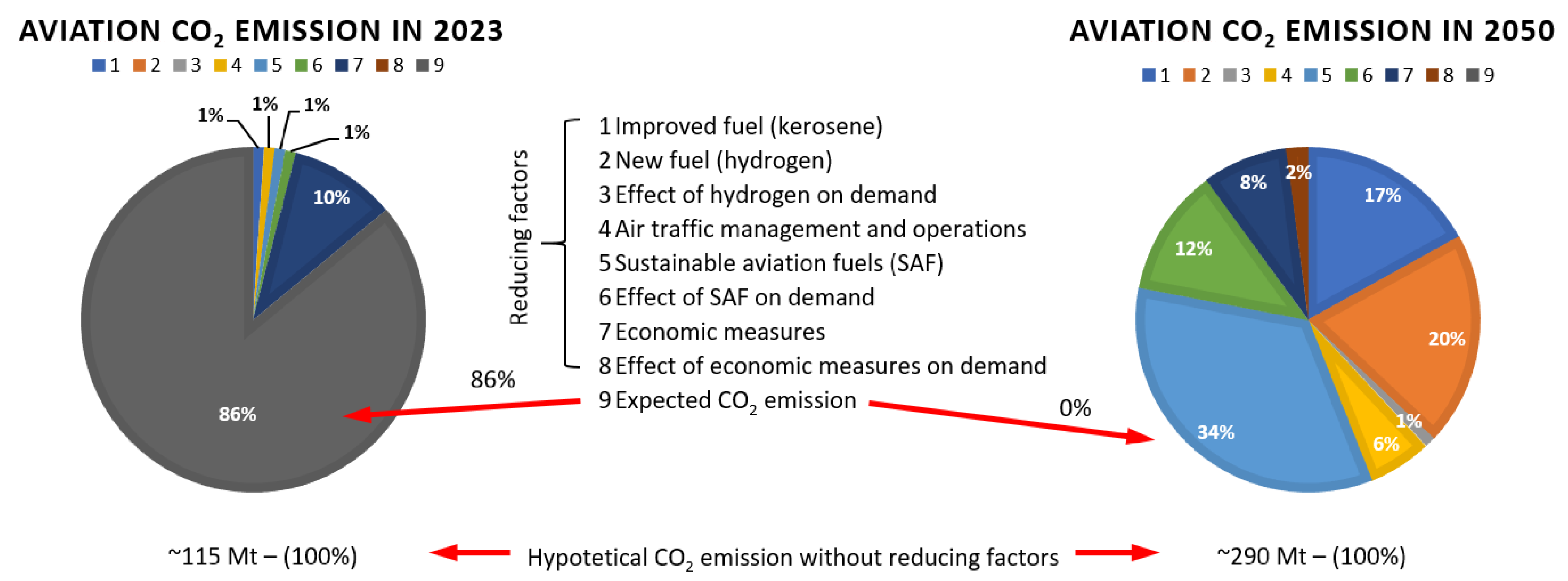
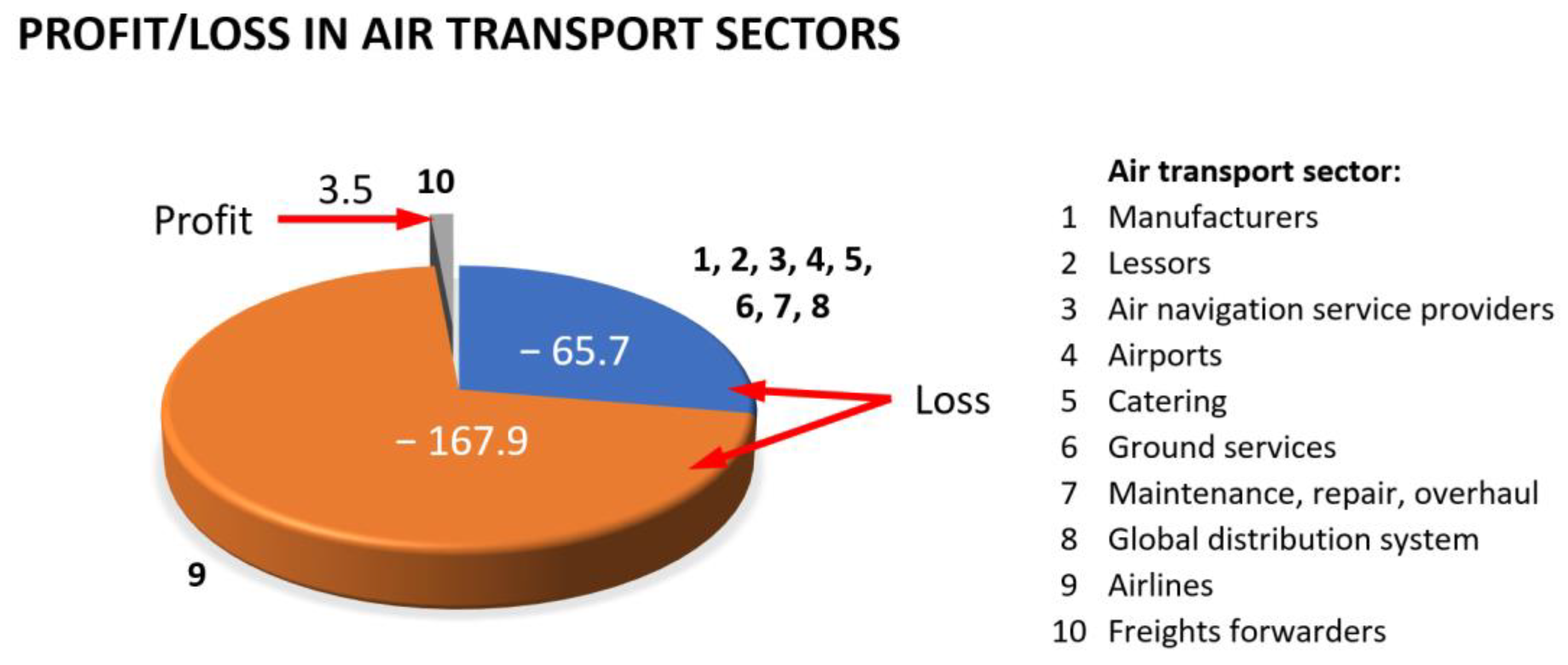

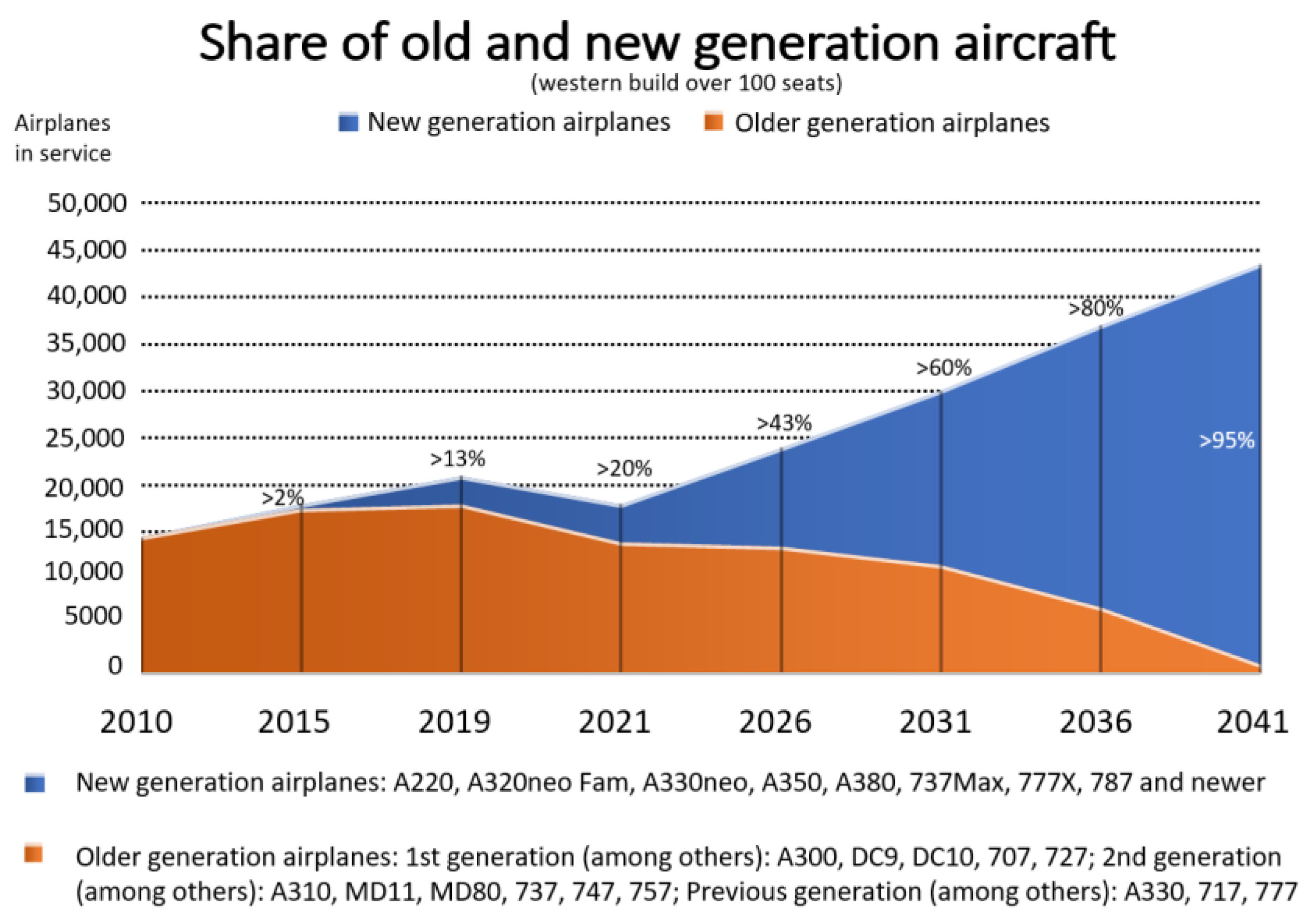

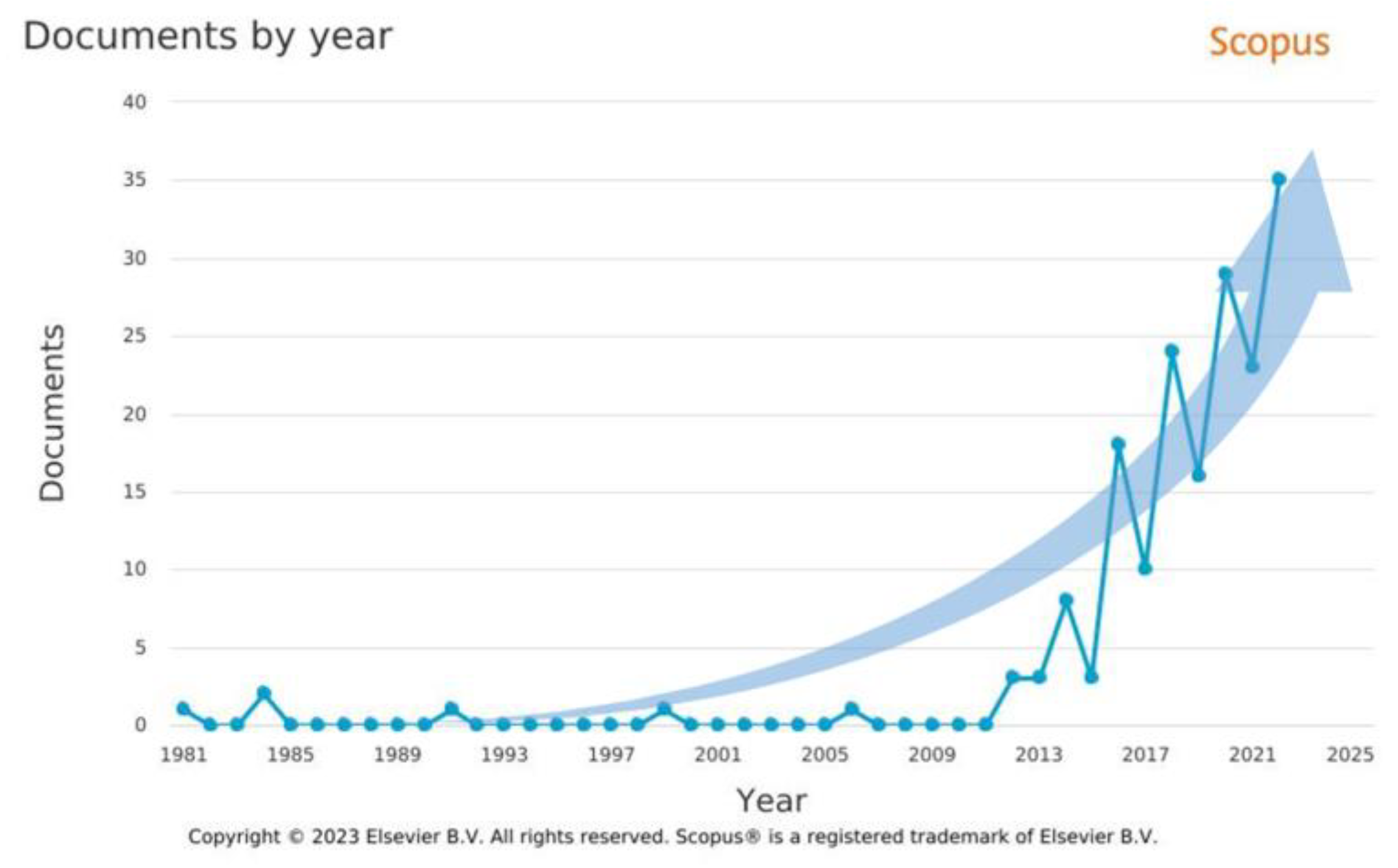


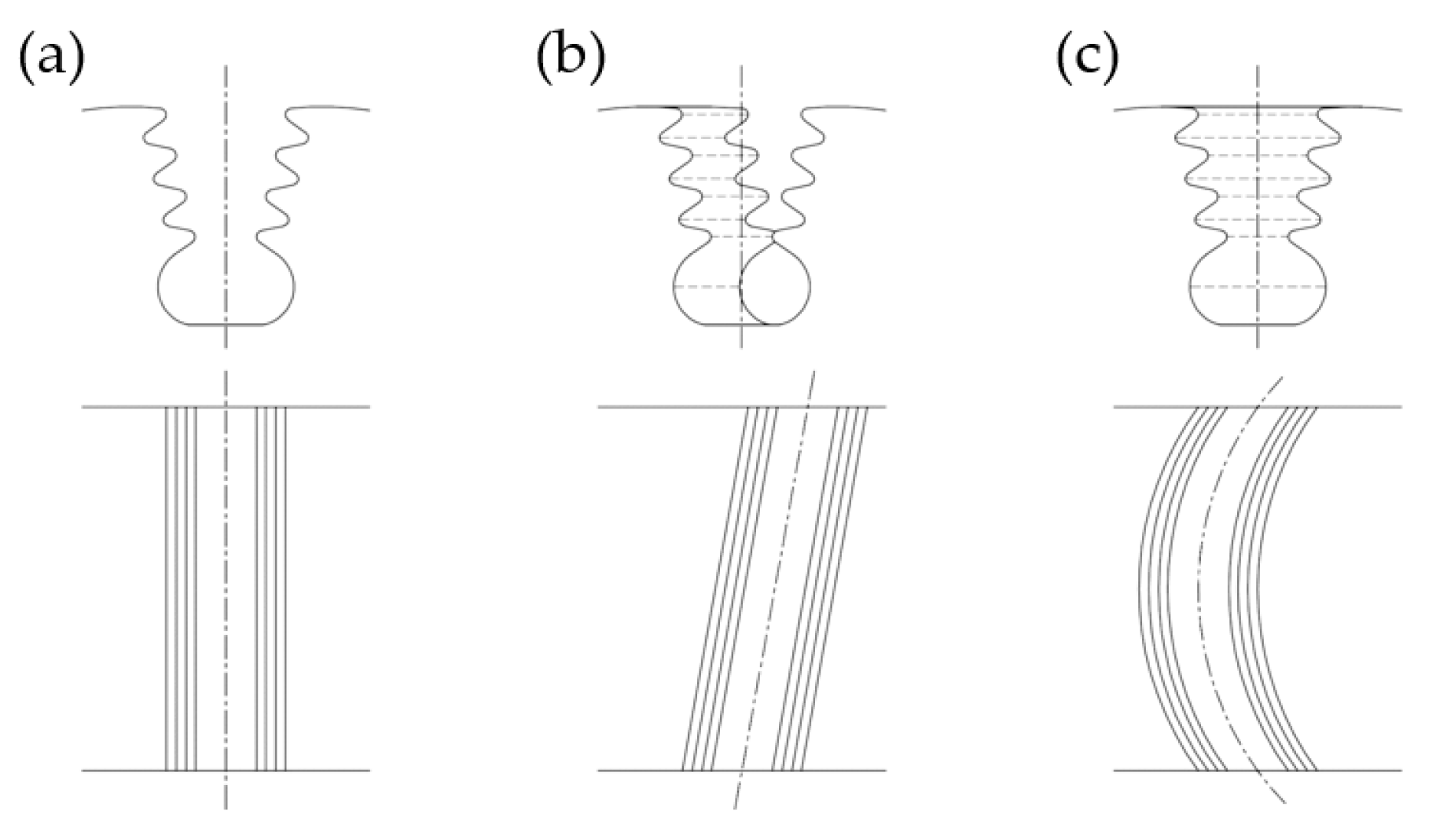
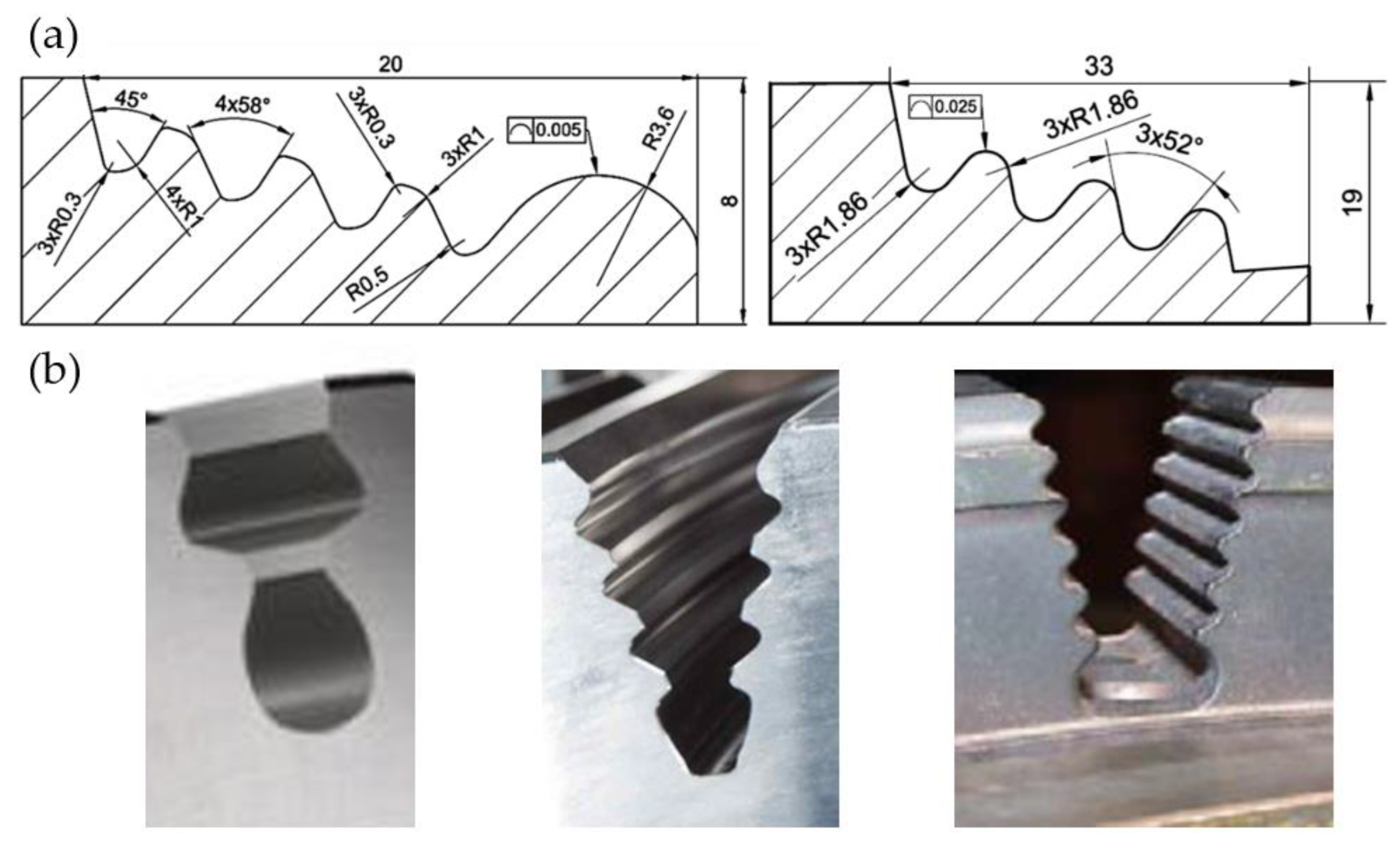

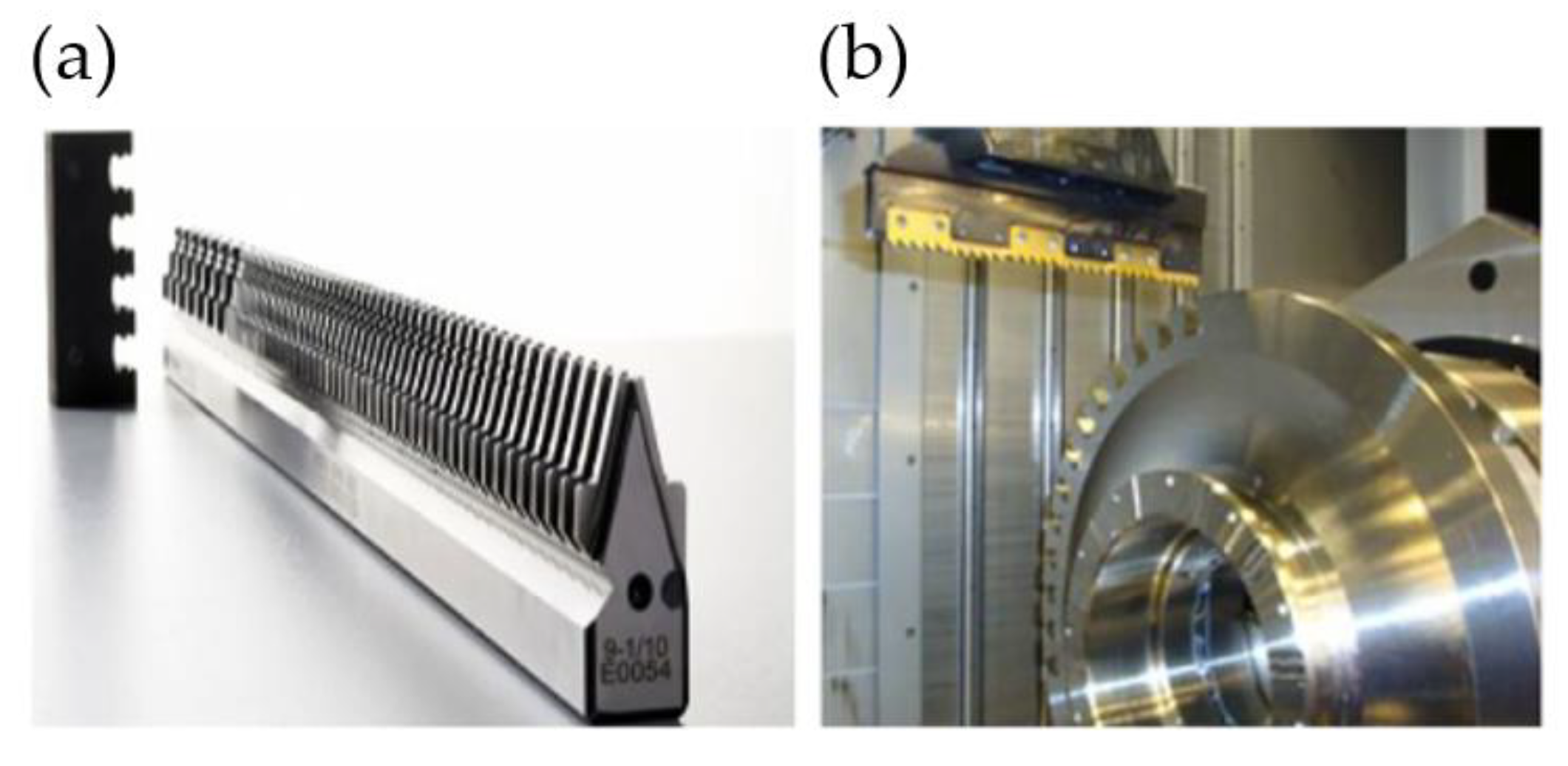

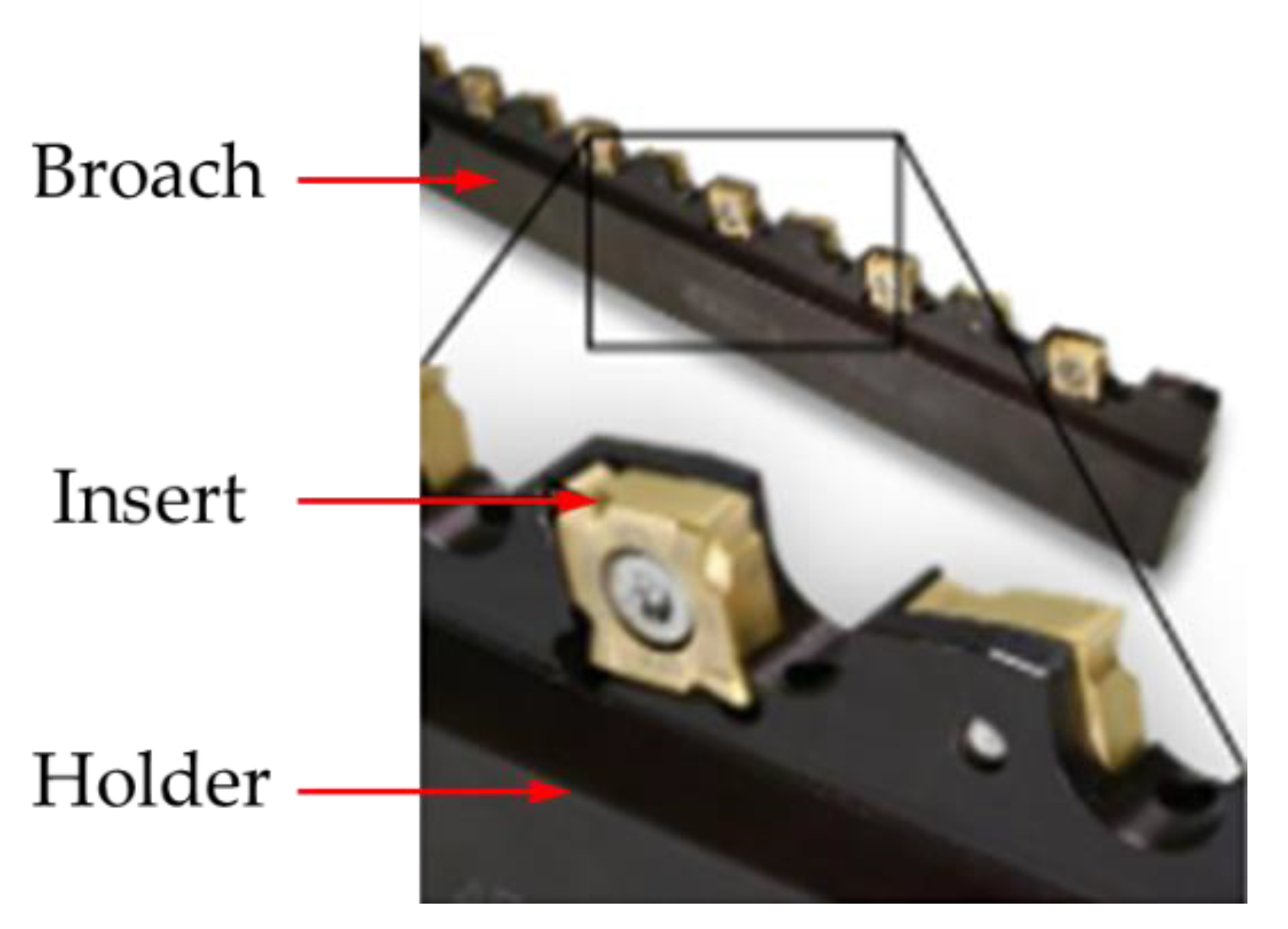
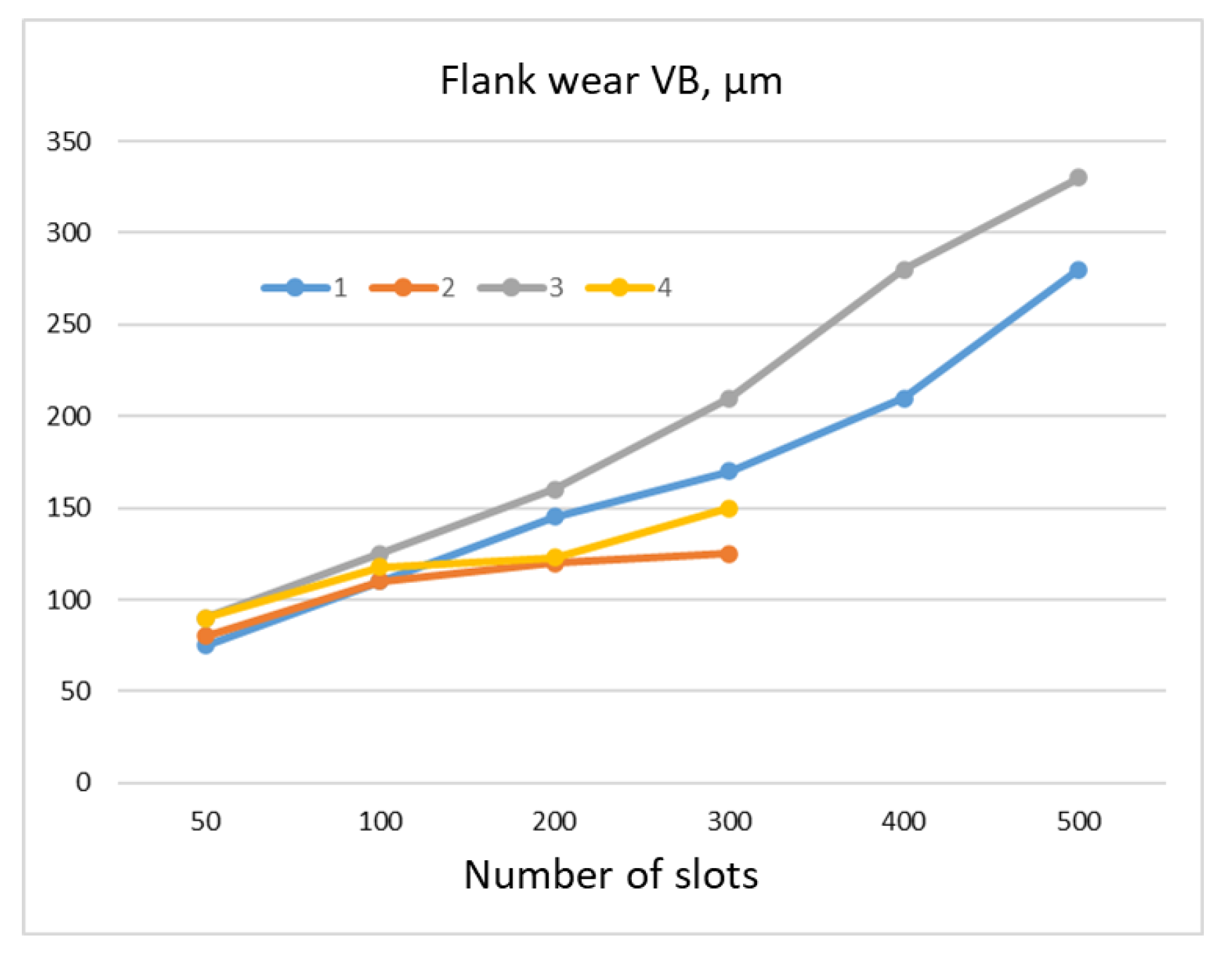
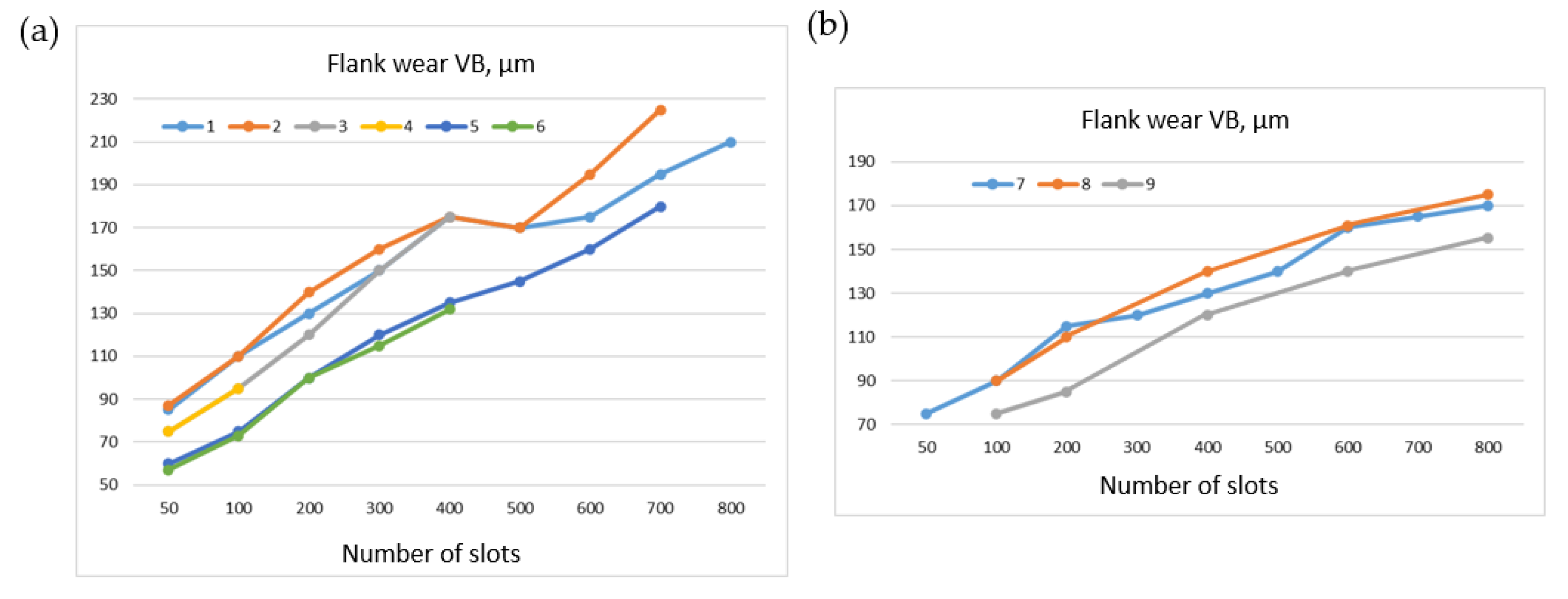
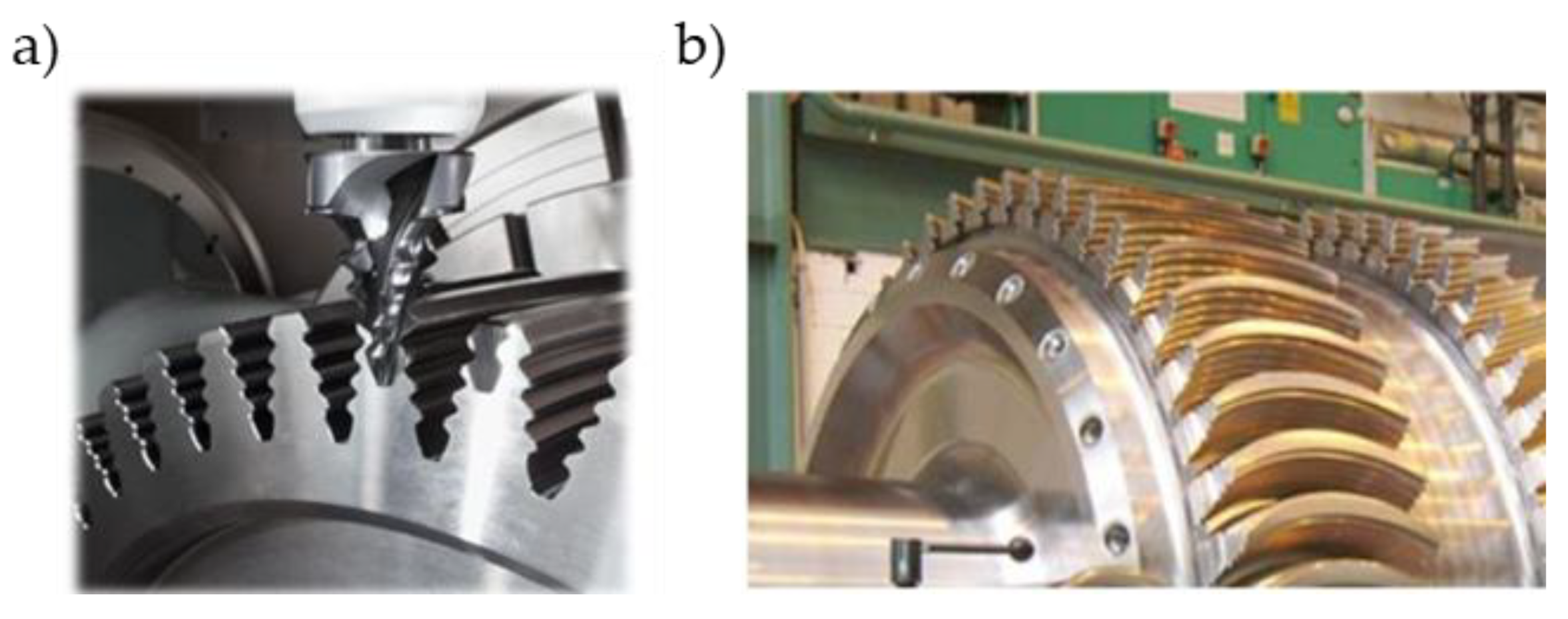
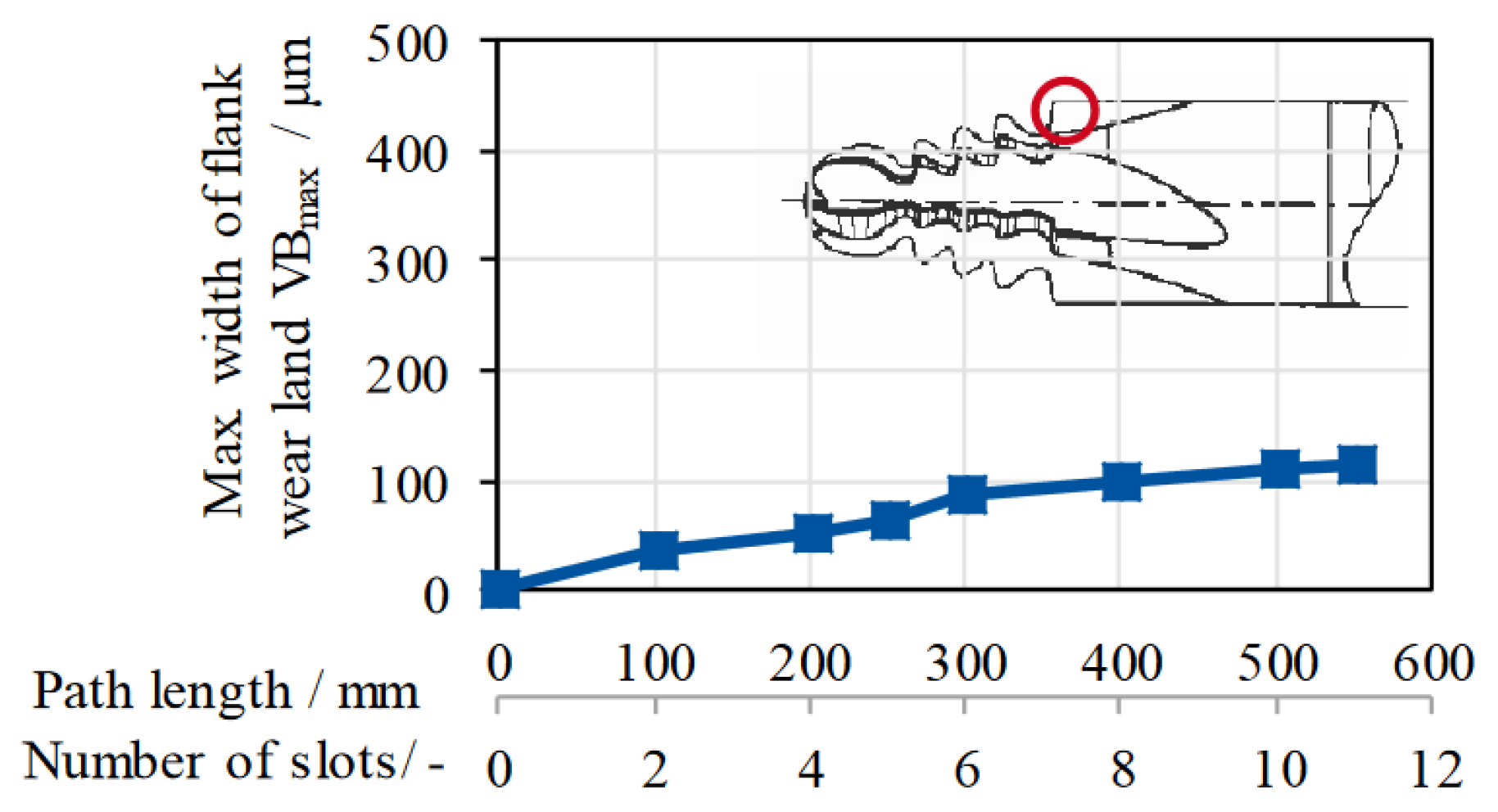
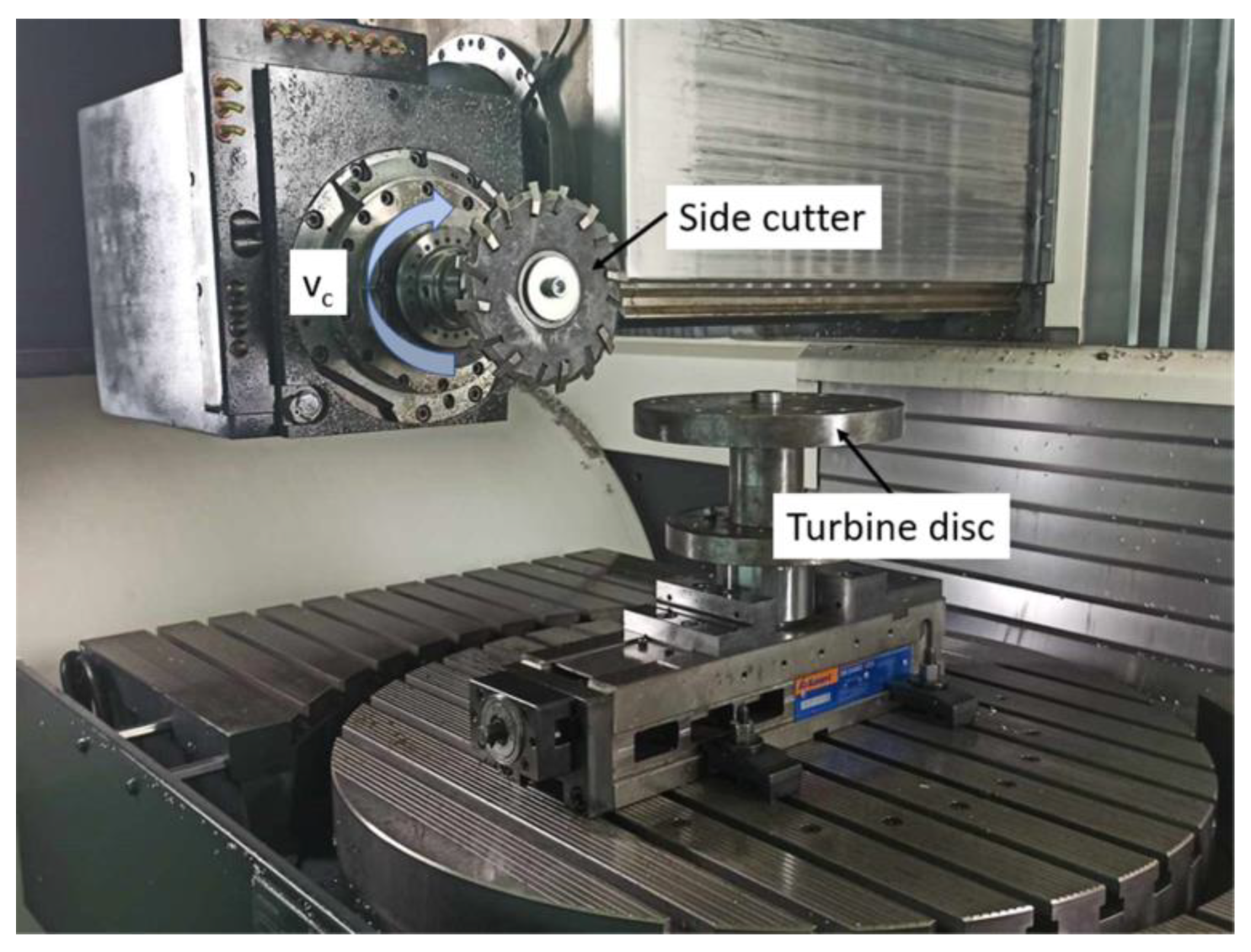
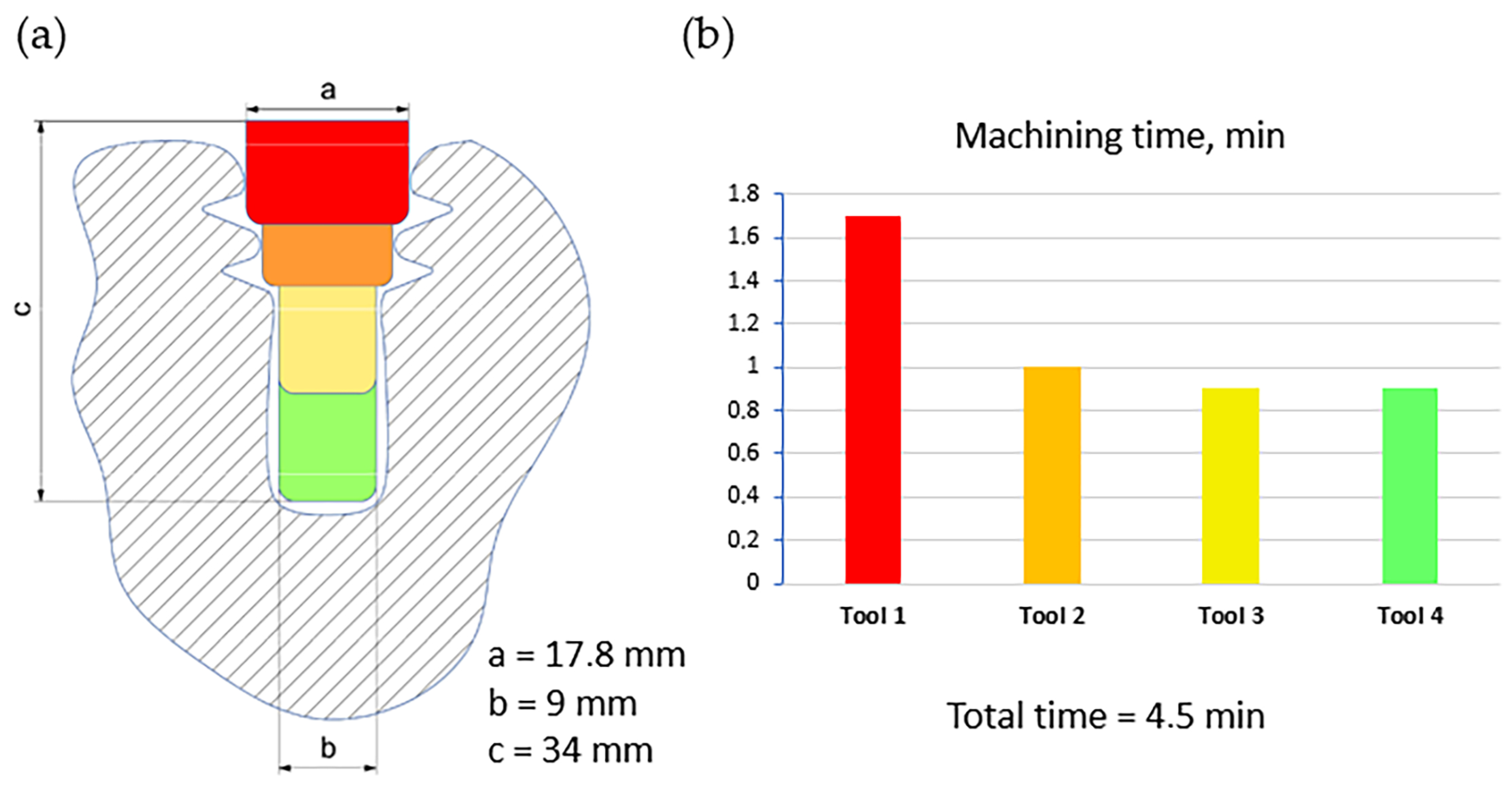
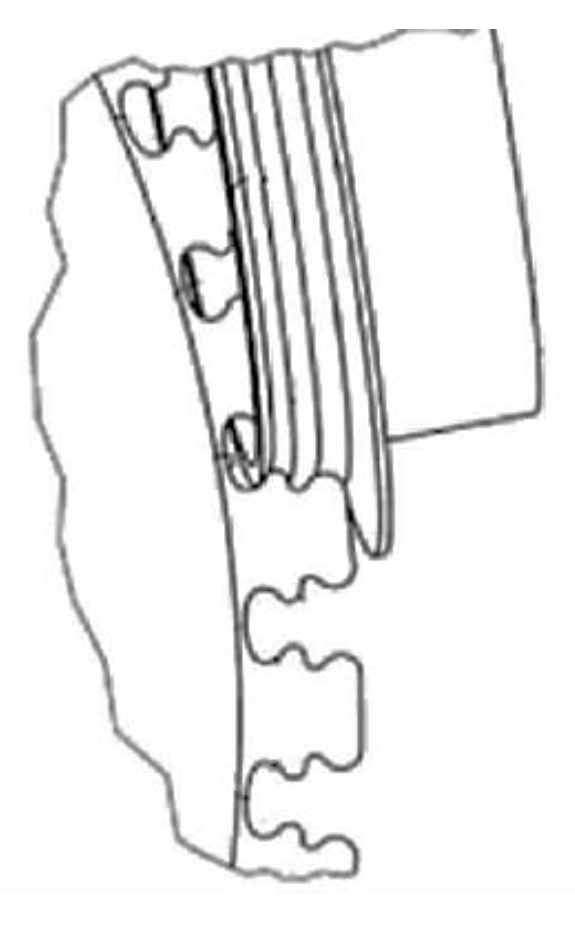
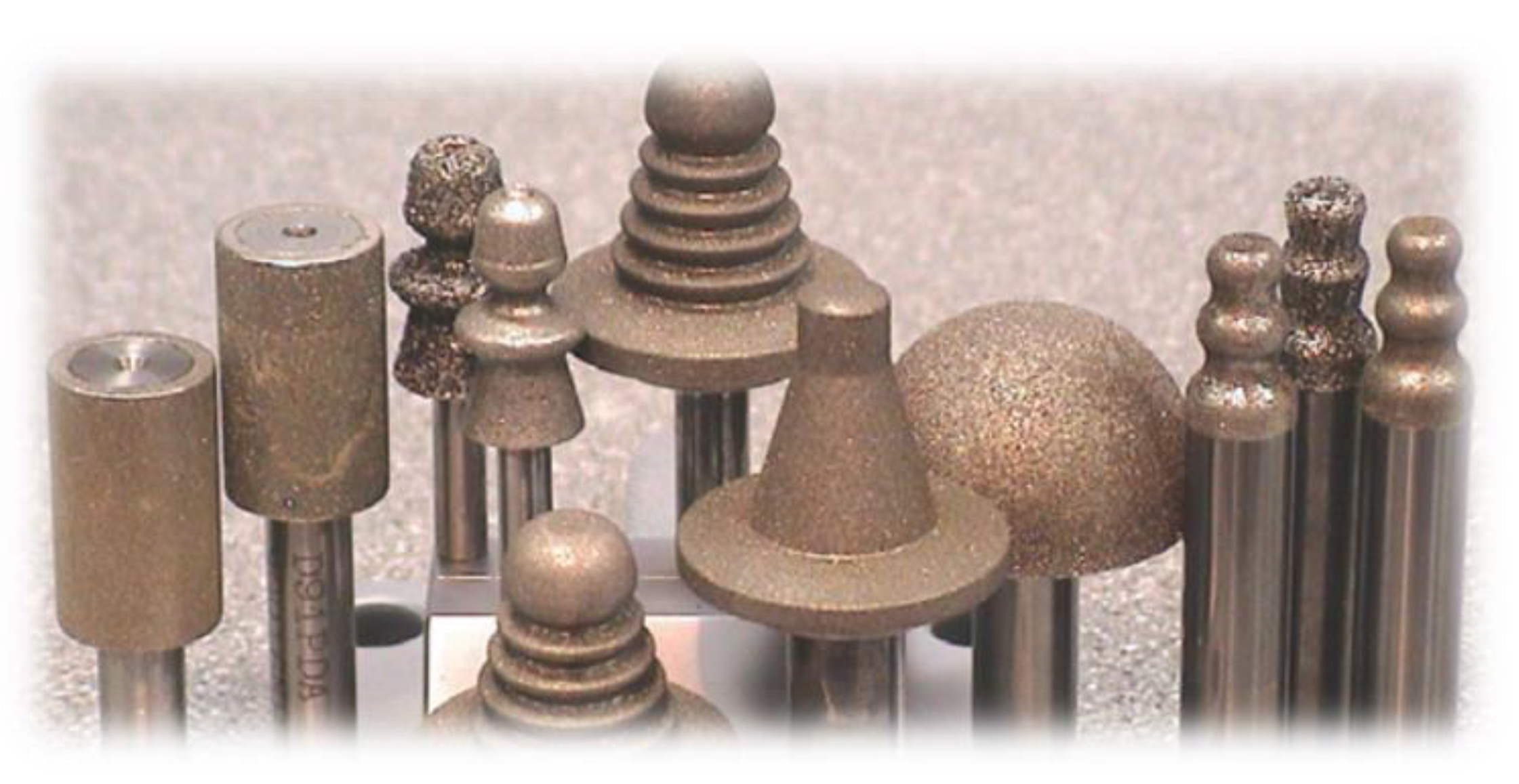






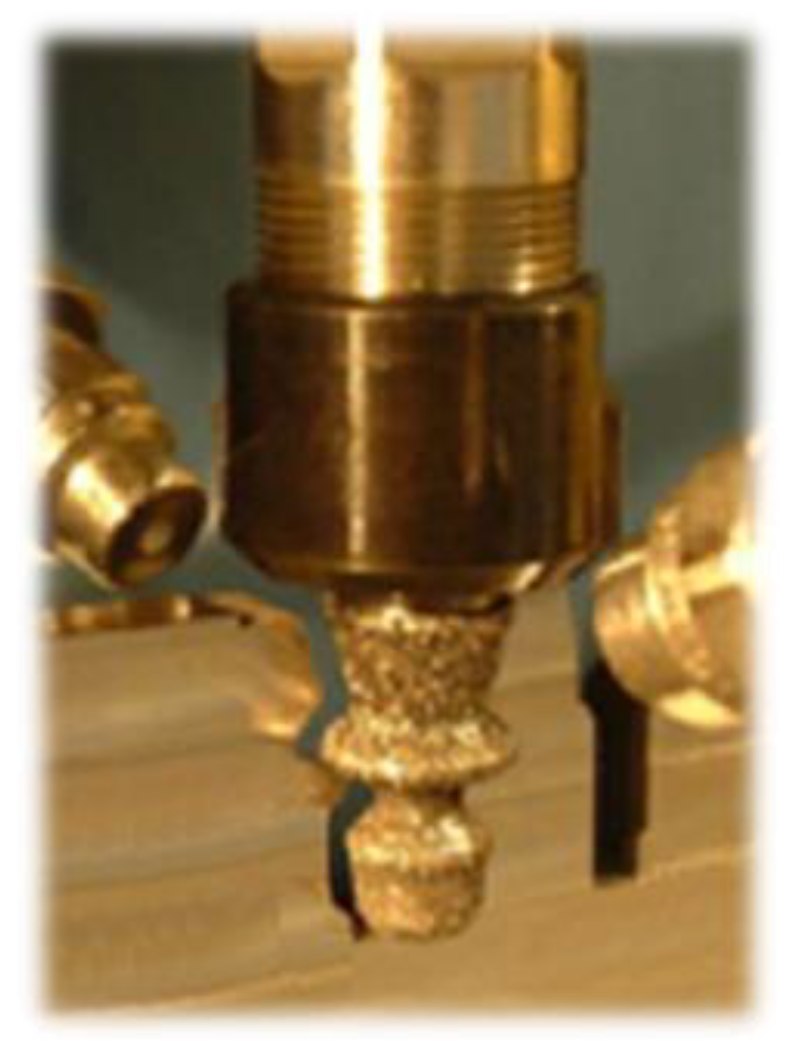




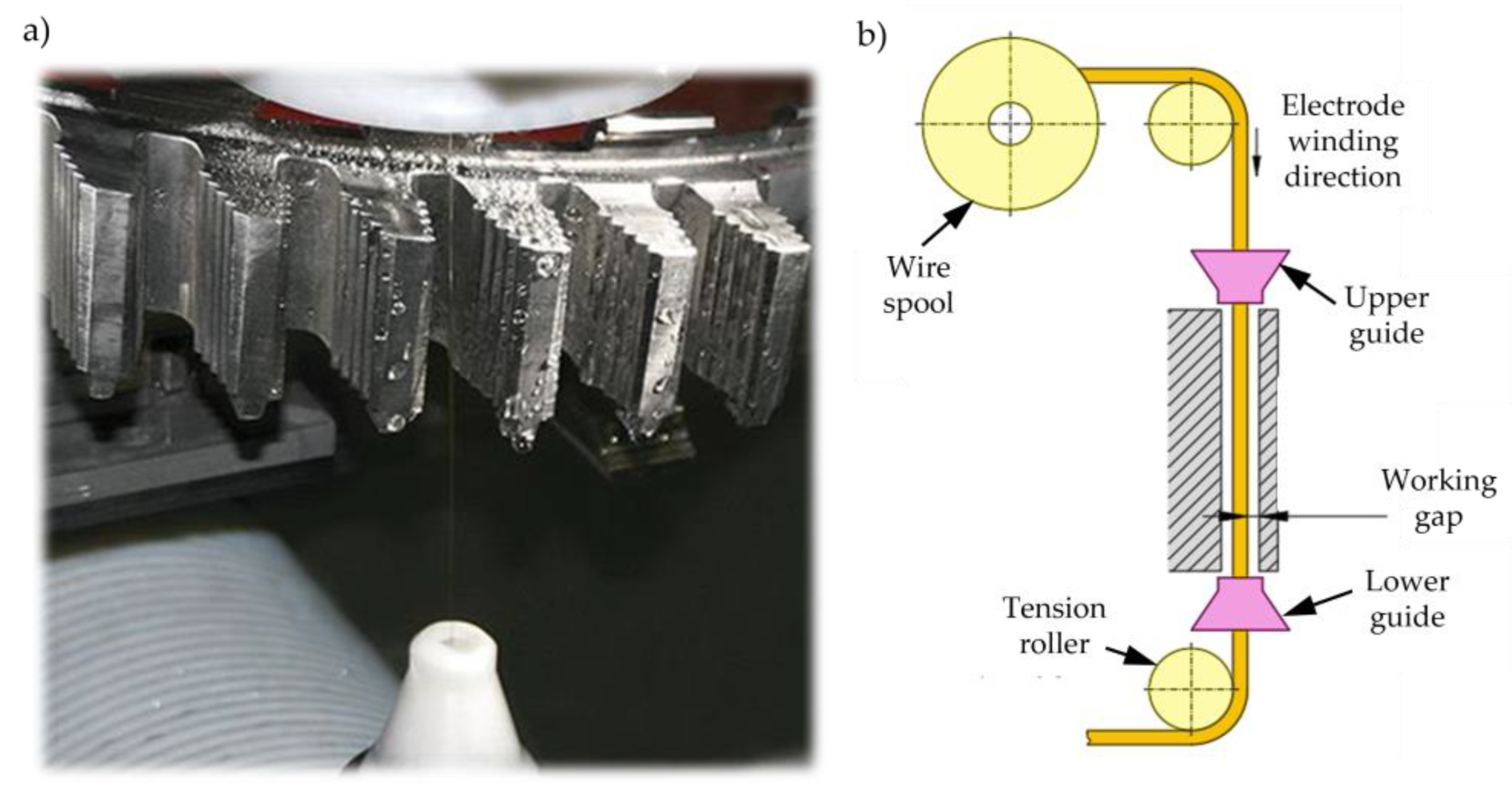
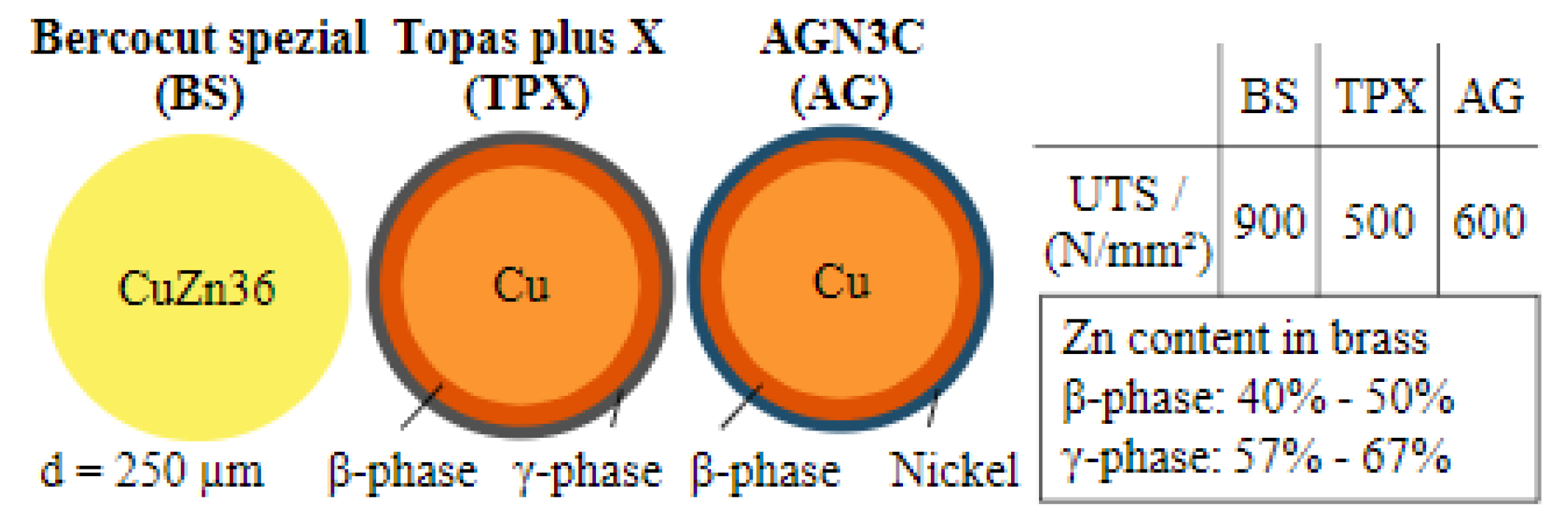
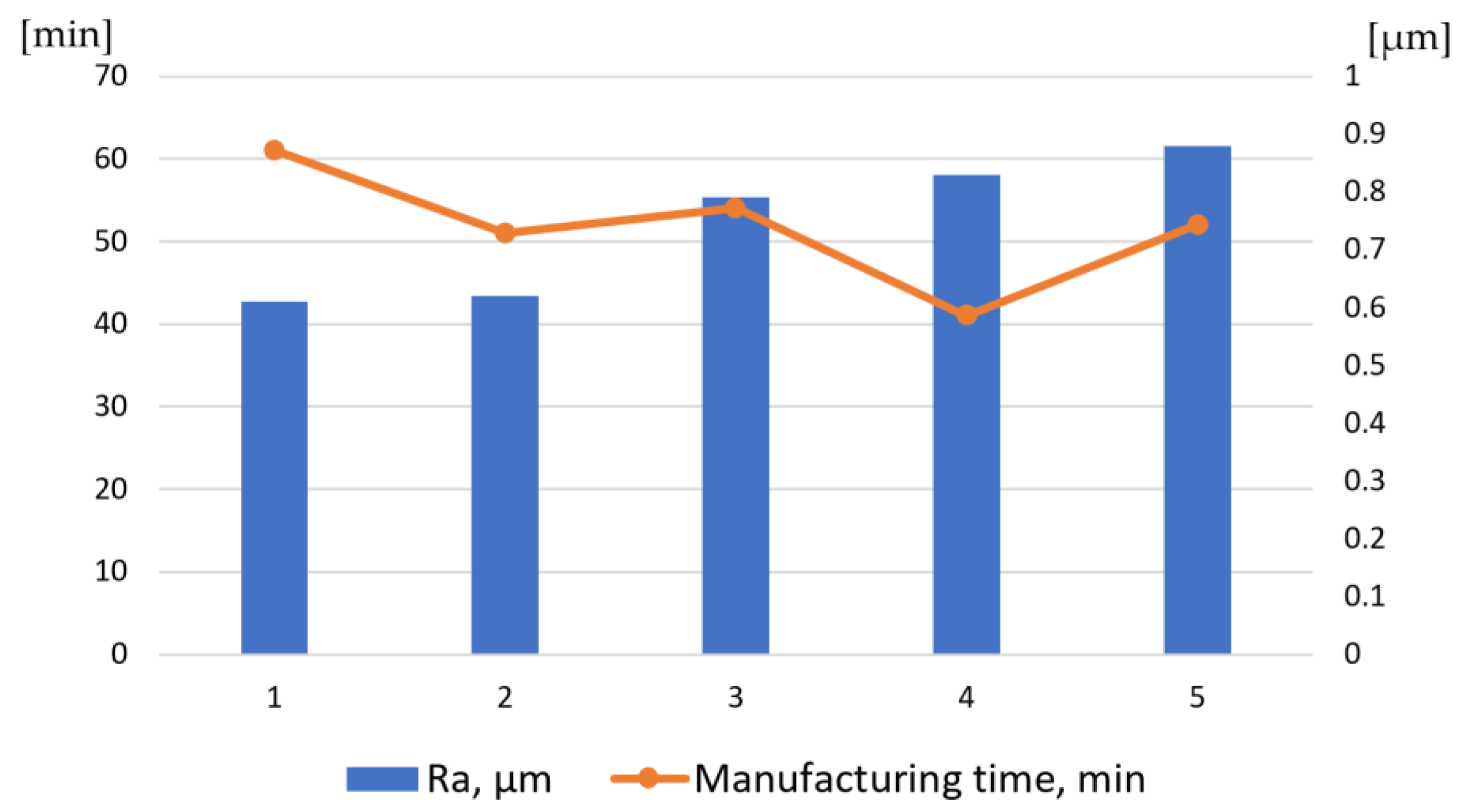









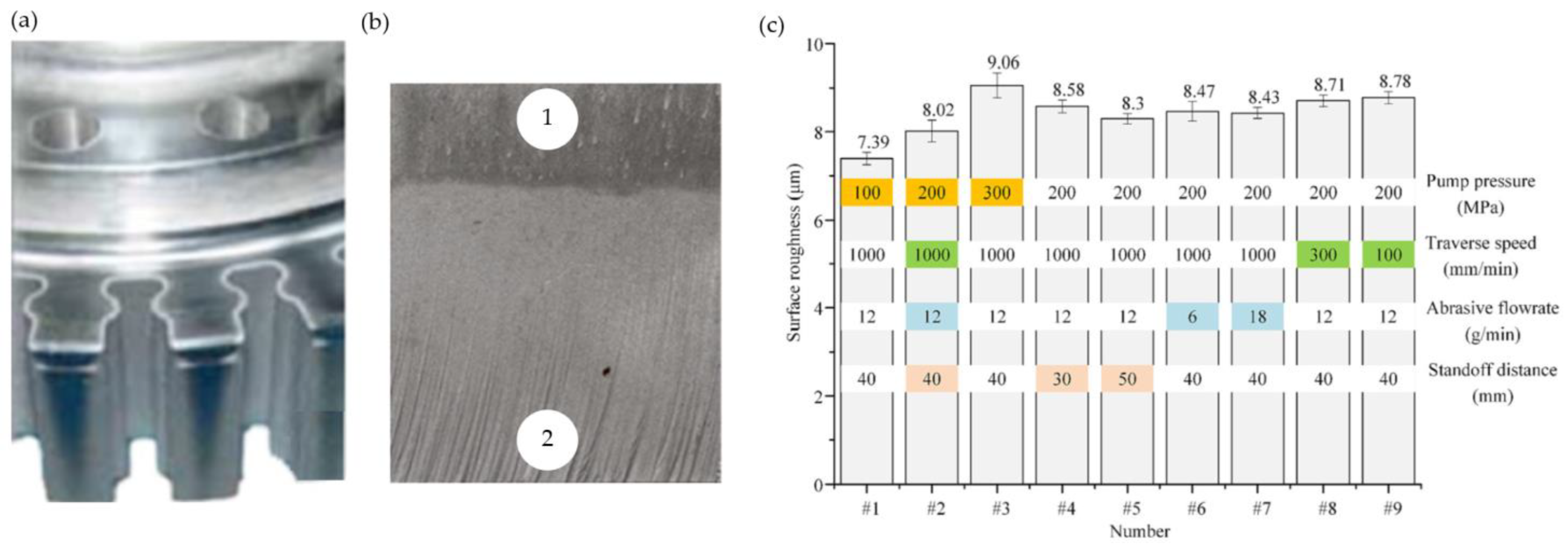
| Machining Method | Broaching | Milling | Grinding | ECPG | ECM | EDM | WEDM | WECM | Wire ET | AWJM |
|---|---|---|---|---|---|---|---|---|---|---|
| Shape and dimensional accuracy | ||||||||||
| Surface roughness | ||||||||||
| Surface layer condition | ||||||||||
| Machining efficiency | ||||||||||
| Roughing machining | ||||||||||
| Finishing machining | ||||||||||
| Cost | ||||||||||
| Tool | ||||||||||
| Production flexibility | ||||||||||
| Mass production | ||||||||||
| Small lot production |
Disclaimer/Publisher’s Note: The statements, opinions and data contained in all publications are solely those of the individual author(s) and contributor(s) and not of MDPI and/or the editor(s). MDPI and/or the editor(s) disclaim responsibility for any injury to people or property resulting from any ideas, methods, instructions or products referred to in the content. |
© 2023 by the authors. Licensee MDPI, Basel, Switzerland. This article is an open access article distributed under the terms and conditions of the Creative Commons Attribution (CC BY) license (https://creativecommons.org/licenses/by/4.0/).
Share and Cite
Buk, J.; Sułkowicz, P.; Szeliga, D. The Review of Current and Proposed Methods of Manufacturing Fir Tree Slots of Turbine Aero Engine Discs. Materials 2023, 16, 5143. https://doi.org/10.3390/ma16145143
Buk J, Sułkowicz P, Szeliga D. The Review of Current and Proposed Methods of Manufacturing Fir Tree Slots of Turbine Aero Engine Discs. Materials. 2023; 16(14):5143. https://doi.org/10.3390/ma16145143
Chicago/Turabian StyleBuk, Jarosław, Paweł Sułkowicz, and Dariusz Szeliga. 2023. "The Review of Current and Proposed Methods of Manufacturing Fir Tree Slots of Turbine Aero Engine Discs" Materials 16, no. 14: 5143. https://doi.org/10.3390/ma16145143
APA StyleBuk, J., Sułkowicz, P., & Szeliga, D. (2023). The Review of Current and Proposed Methods of Manufacturing Fir Tree Slots of Turbine Aero Engine Discs. Materials, 16(14), 5143. https://doi.org/10.3390/ma16145143







